US Foreign Policy
Trade, Immigration, Investment, and Monetary Policy
Michael E. Flynn
Kansas State University
Updated: 2021-11-08
Lecture Overview
Terminology
Historical Background
Why do these topics matter?
Trade, immigration, investment, and monetary policy as foreign policy tools.
Key Questions
How has the importance of trade to the US economy changed over time?
What is protectionism? What role has it played in the history of US development?
What is the difference between fiscal and monetary policy? How do they relate to one another?
How does an industry's size relate to its ability to get protectionist policies?
What are the positions of the two major parties been on trade policy? How have they changed over time?
What are some of the major changes in immigration policy across US history?
How has immigration been a tool of US foreign policy?
Terminology
Terminology
Trade
Trade: The flow of goods and services between countries
Imports: Goods and services that are consumed within a referent country but produced in another.
Exports: Goods and services that are produced within a referent country for consumption in another.
Aggregation: We can talk about how to group different businesses or products (specific items, technologies, industries, sectors, etc.)
Notes
Example of aggregation: North American Industry Classification System Item #311111: Dog and cat food (e.g., canned, dry, frozen, semimoist), manufacturing.
Another: 311330 Cocoa, powdered, mixed with other ingredients, made from purchased chocolate
Terminology
Finance and Monetary Policy
Finance: Refers to the flow of capital (cash) within and across borders
- Portfolio Investment
- Sovereign Lending
- Foreign Direct Investment (FDI)
Monetary Policy: Refers to the supply and valuation of currenty
- Interest rates
- Money supply
Historical Background
Historical Background
Historical Background
Trade before 1934
Protectionism is dominant approach to US economic development
Northeastern manufacturing interests had substantial political influence and favor protectionist policies
Southern and Western agricultural interests less influential and favor freer trade polices.
Historical Background
Trade after 1934
Northeastern and Southern interests align in 1930s and 1940s
Both groups come to support freer trade
Protectionist barriers begin to come down
World War II marks an important turning point
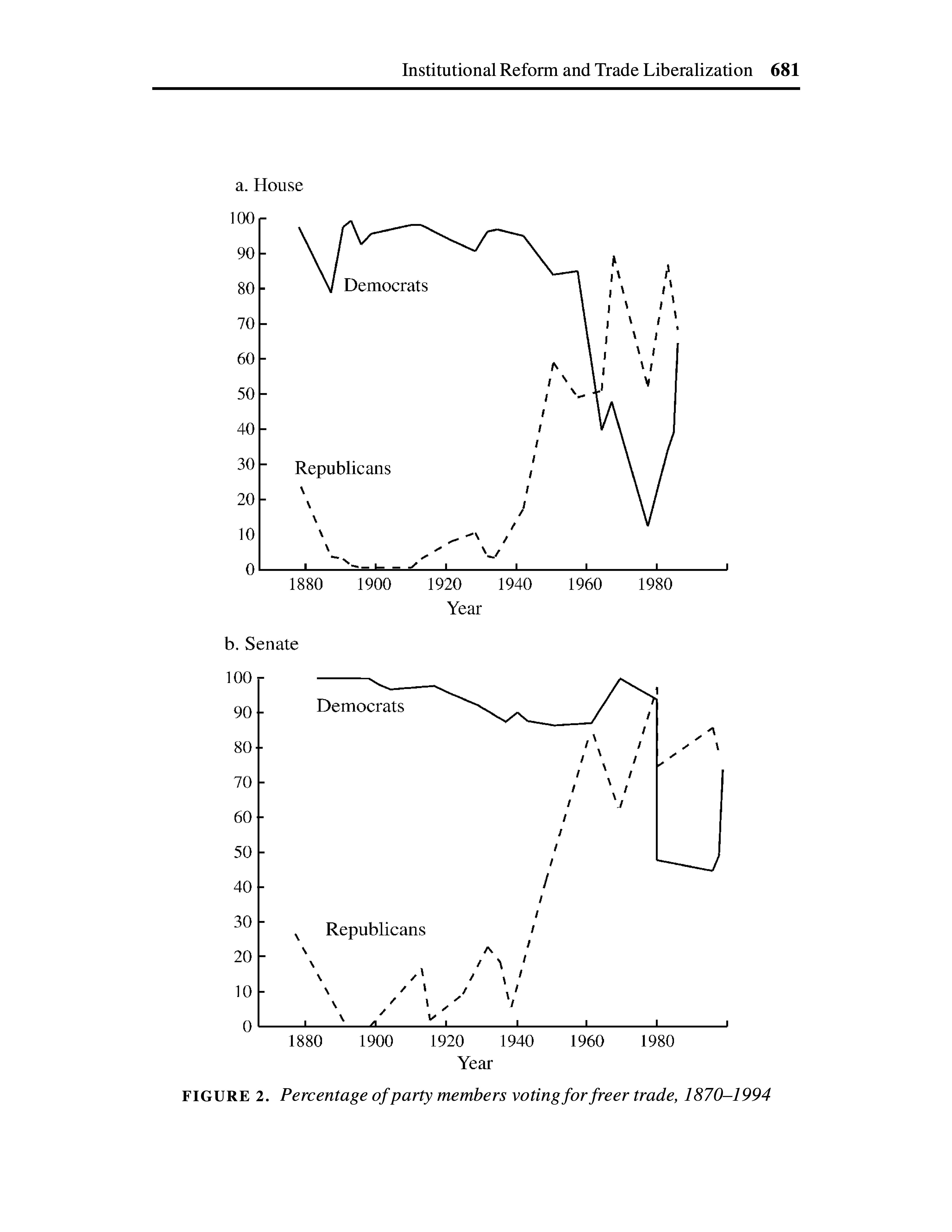
Historical Background
Bretton Woods System
Partly a reaction to pre-World War II move to autarky
Three main components
- General Agreement on Tariffs and Trade (GATT)
- International Monetary Fund (IMF)
- International Bank for Reconstruction and Development (World Bank)
Notes
- GATT focuses on promoting free trade and lowering tariff barriers
- IMF focuses on short-term imbalances in payments between states
- World Bank promotes development in less developed countries
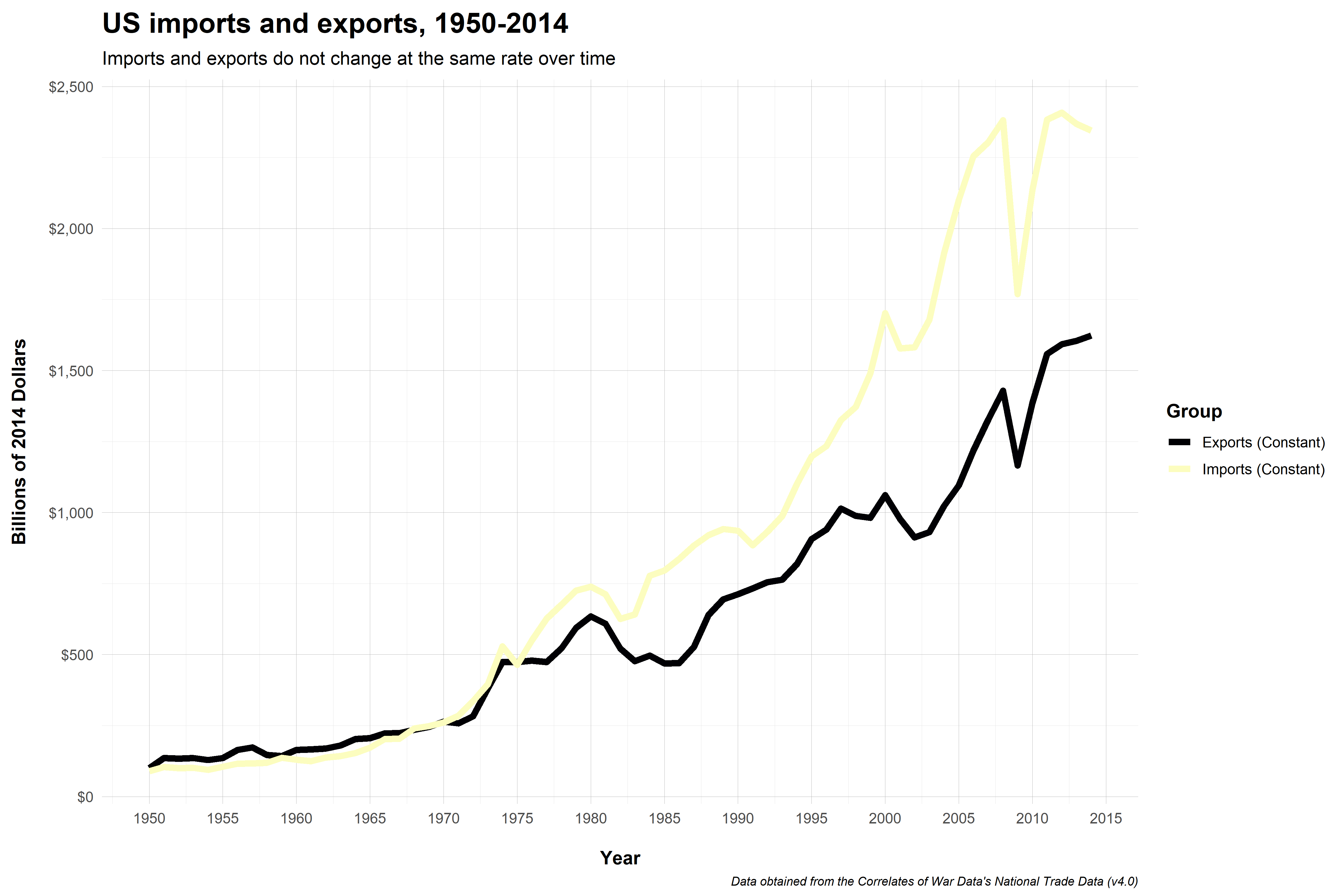
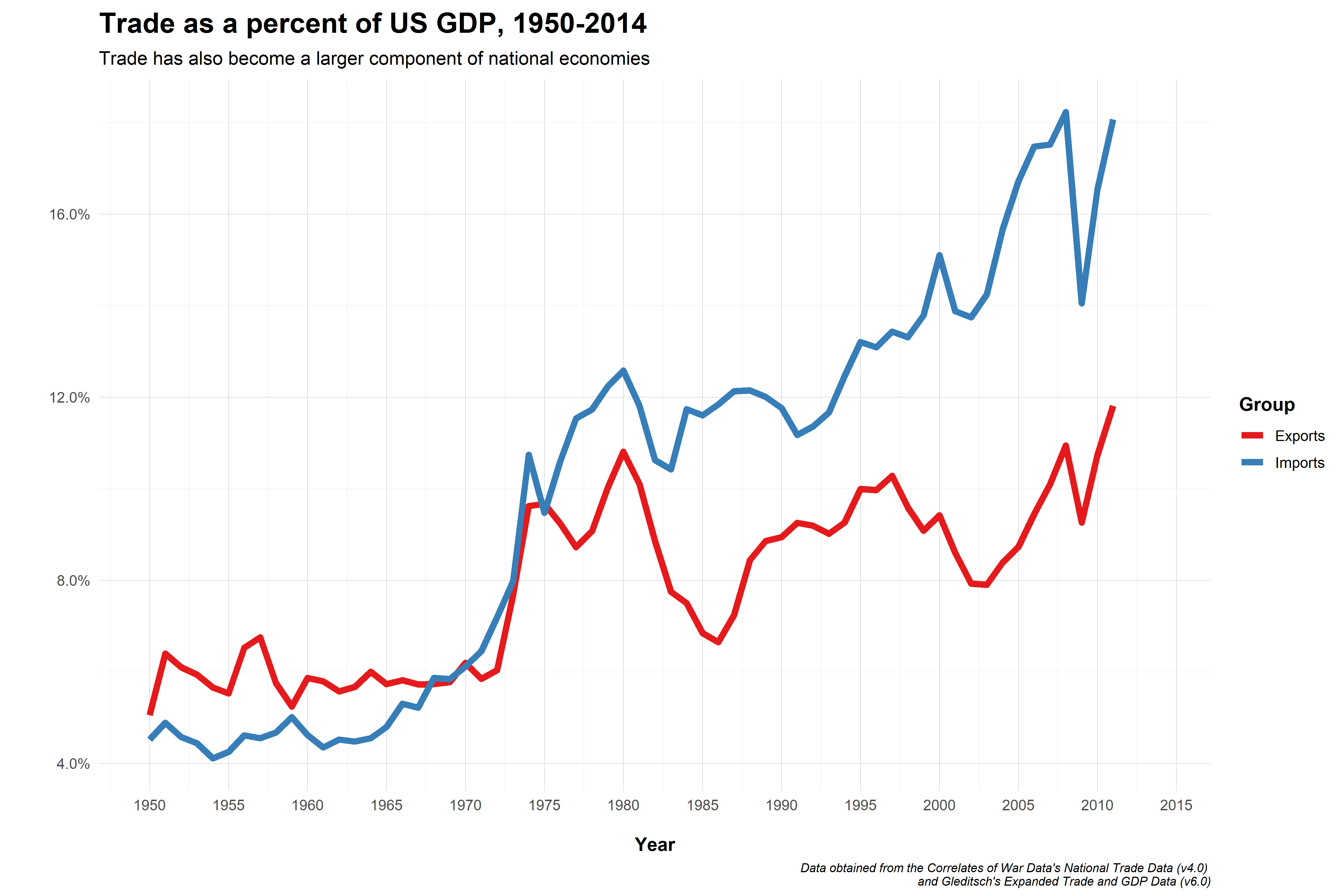
Why Does Trade Matter?
Why Does Trade Matter?
Theoretical
Realism/Mercantilism
Trade as a source of national power
Trade is a zero-sum game
Liberal theory
Trade can be positive-sum (both/multiple players can "win")
Trade has other beneficial effects (e.g. it promotes peaceful relations between states)
Notes
- Historically nations very wary of trade as it might enrich adversaries
- Adam Smith and David Ricardo came along and talked about the benefits of specialization and free markets.
- We see greater moves towards free trade throughout the 1800s, mostly as a response to British leadership and technological change
- Ideas gain steam in 20th century through Woodrow Wilson's 14 Points
Why Does Trade Matter?
Tangible benefits
Trade creates jobs
Access to desirable goods (spices, cool cars, technology, media/entertainment)
Less tangible
Soft power and prestige
Information, education, etc.
Trade as a Policy Instrument
Trade as a Policy Instrument
Trade can be a source of power
Control over vital resources
Necessary for survival of the state, everyday life, etc.
Few substitutes, few alternative suppliers
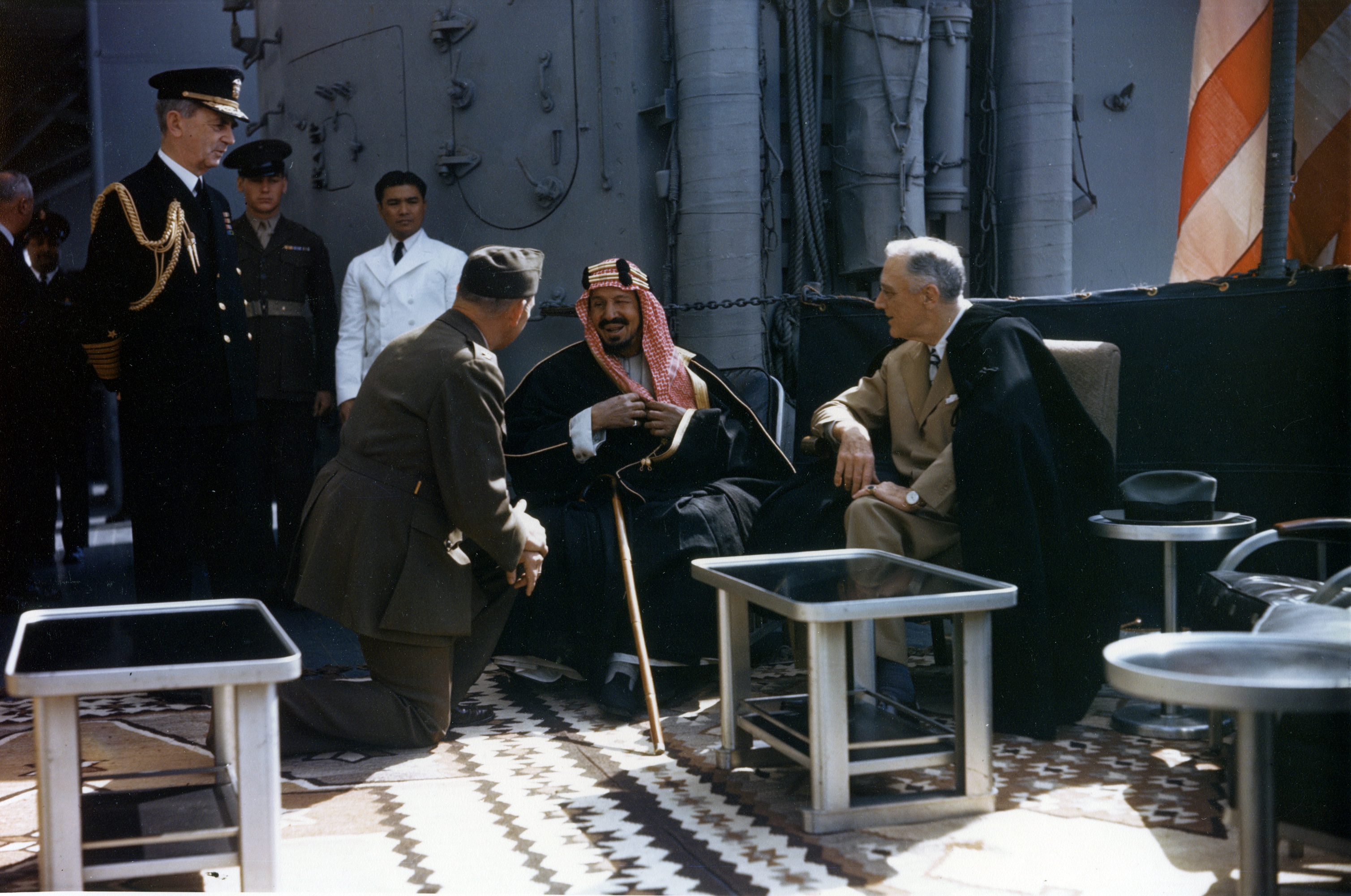
Trade as a Policy Instrument
Market access
Producers need markets. Scaling up production requires larger markets.
Exports bring in money from the sale of goods
Domestic consumer base is often limited in various ways (money, taste, interests, etc.)
Provides bargaining power
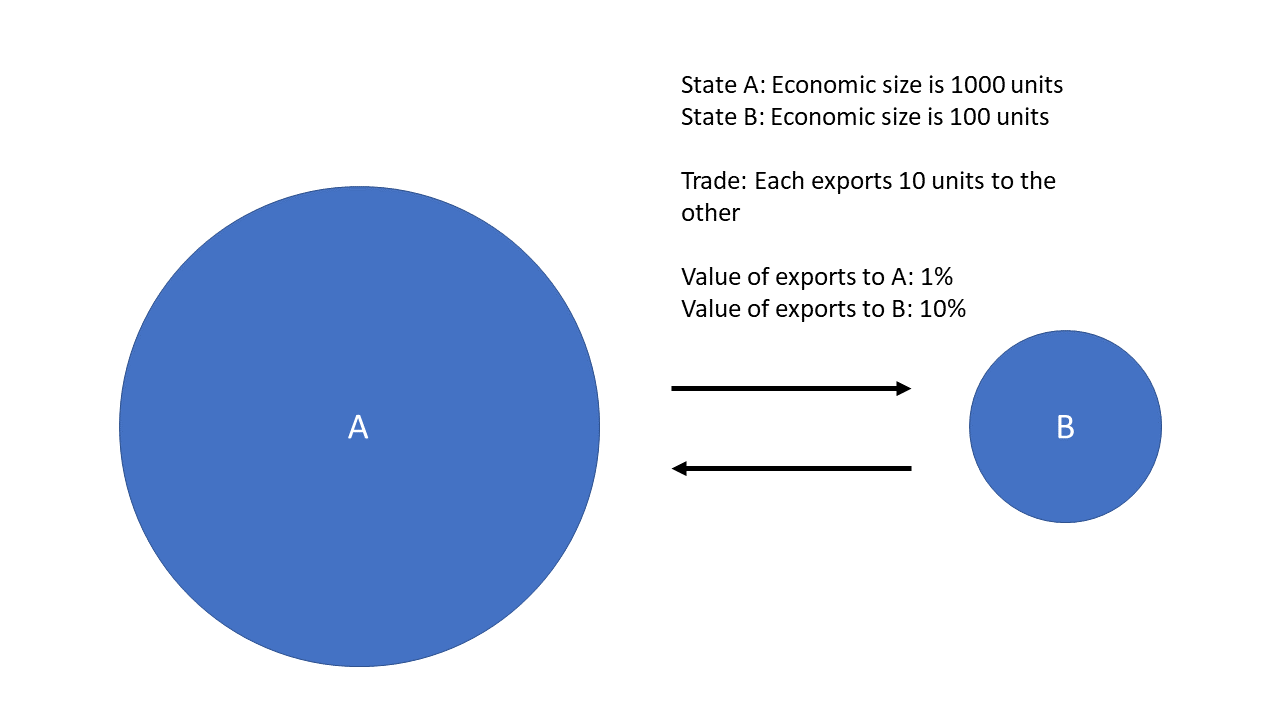
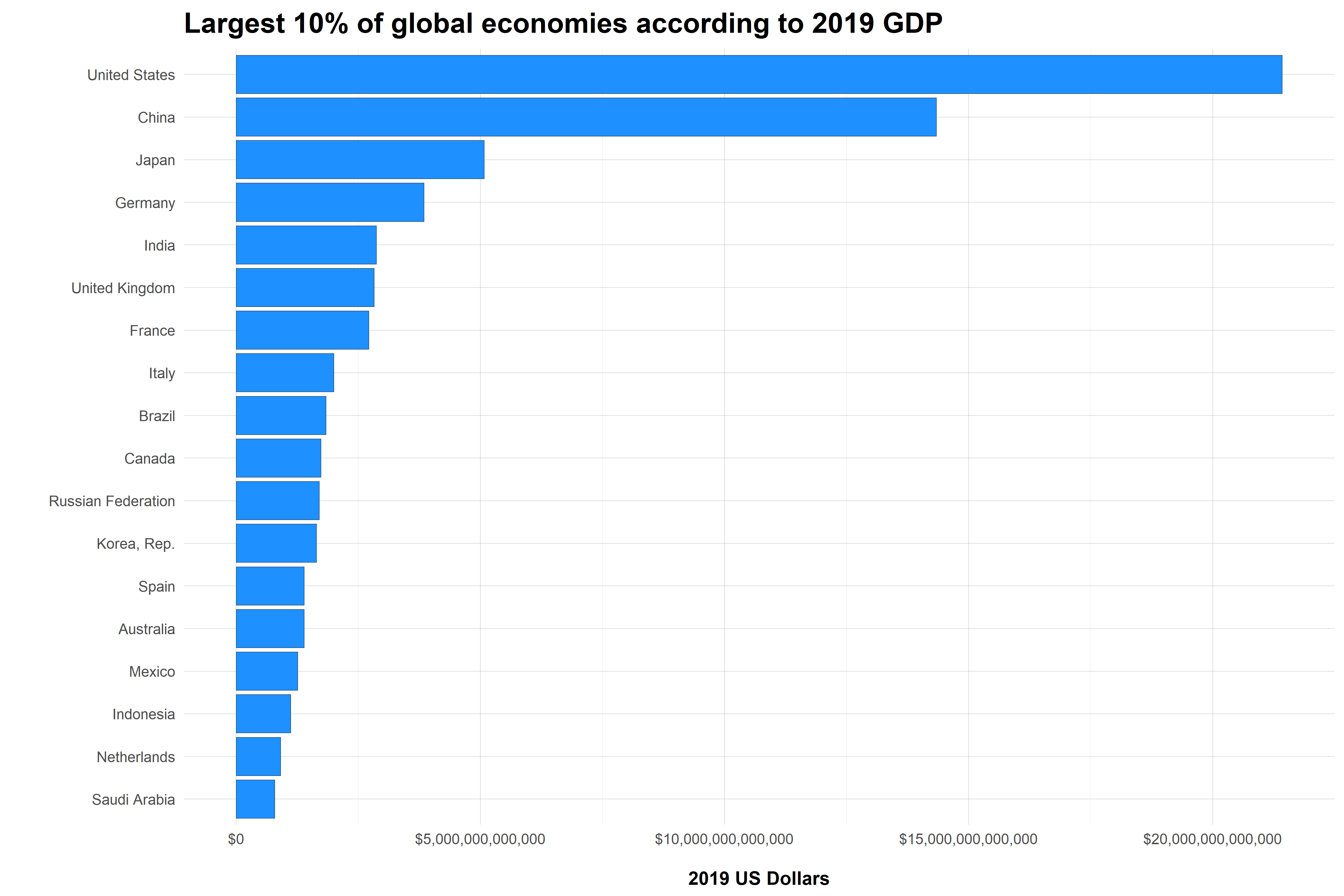
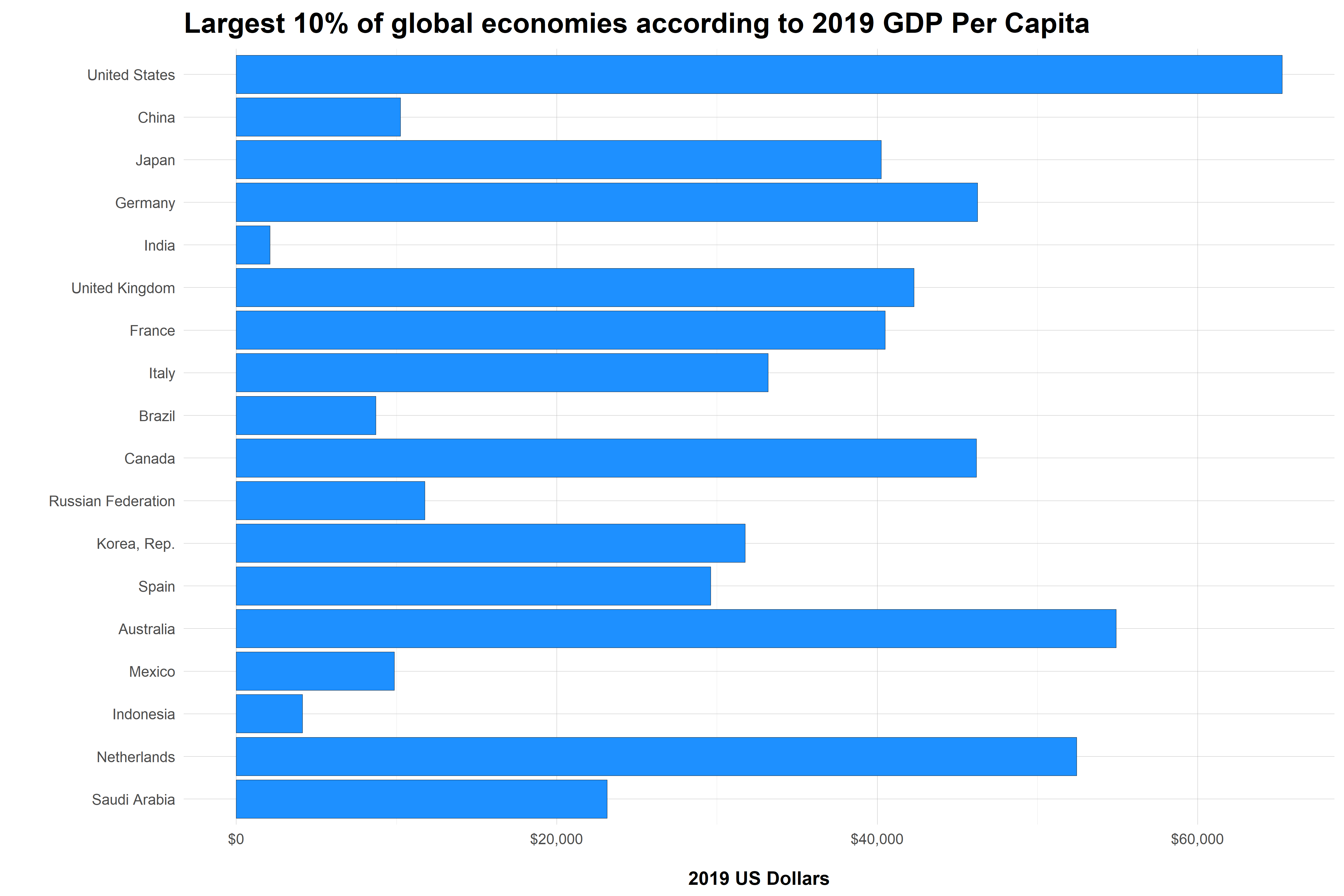
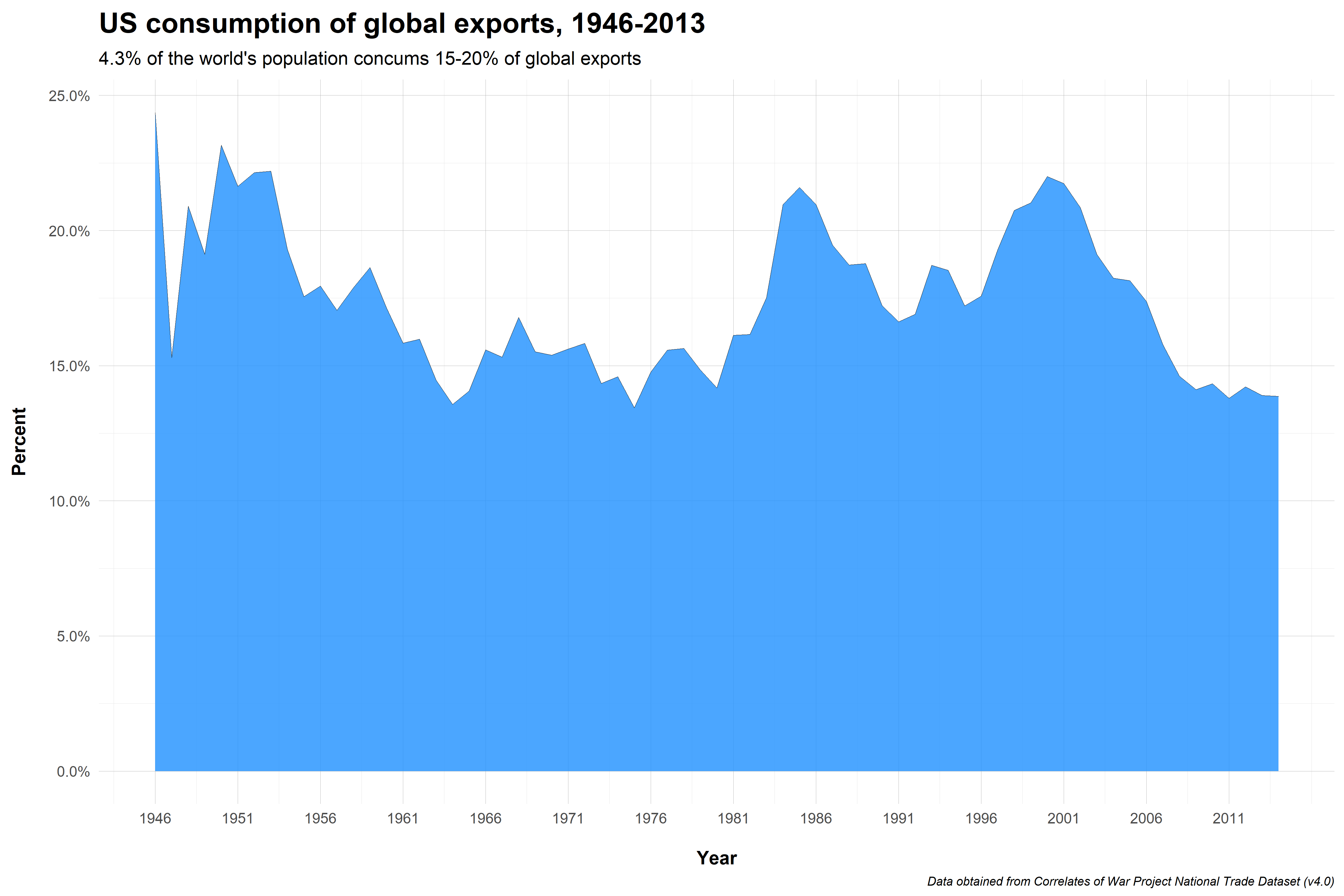
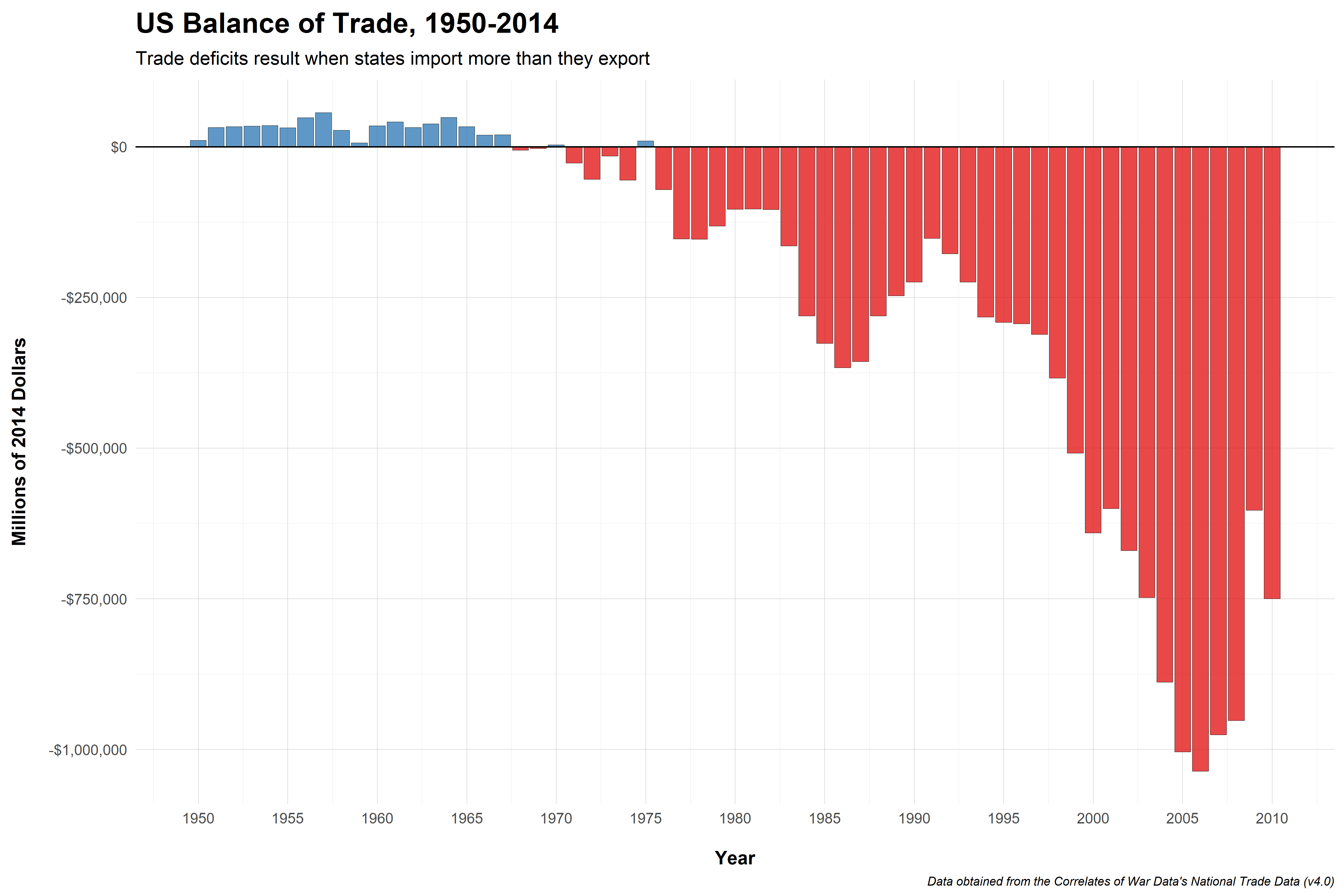
Trade as a Policy Instrument
Does this mean trade is hurting your economy?
Trade as a Policy Instrument
Does this mean trade is hurting your economy?
No!
Trade as a Policy Instrument
Does this mean trade is hurting your economy?
No!
Let's look at how GDP is calculated:
GDPit=Consumptionit+Investmentit+Governmentit+(Exportsit−Importsit)
Trade as a Policy Instrument
Protectionism
Trade creates winners and losers
Some countries can produce goods more/less efficiently than others
Domestic producers who are relatively inefficient tend to favor protectionism (i.e. government intervention)
Trade as a Policy Instrument
Forms of Protectionism
Trade protection can come in a variety of policy interventions
Tariffs: Taxes on imported goods
Quotas: Limits on how much of a good is imported
Subsidies: Government payments to purchase goods or offset costs of donig business
Health and safety regulations: Creating different standards between importers and exporters
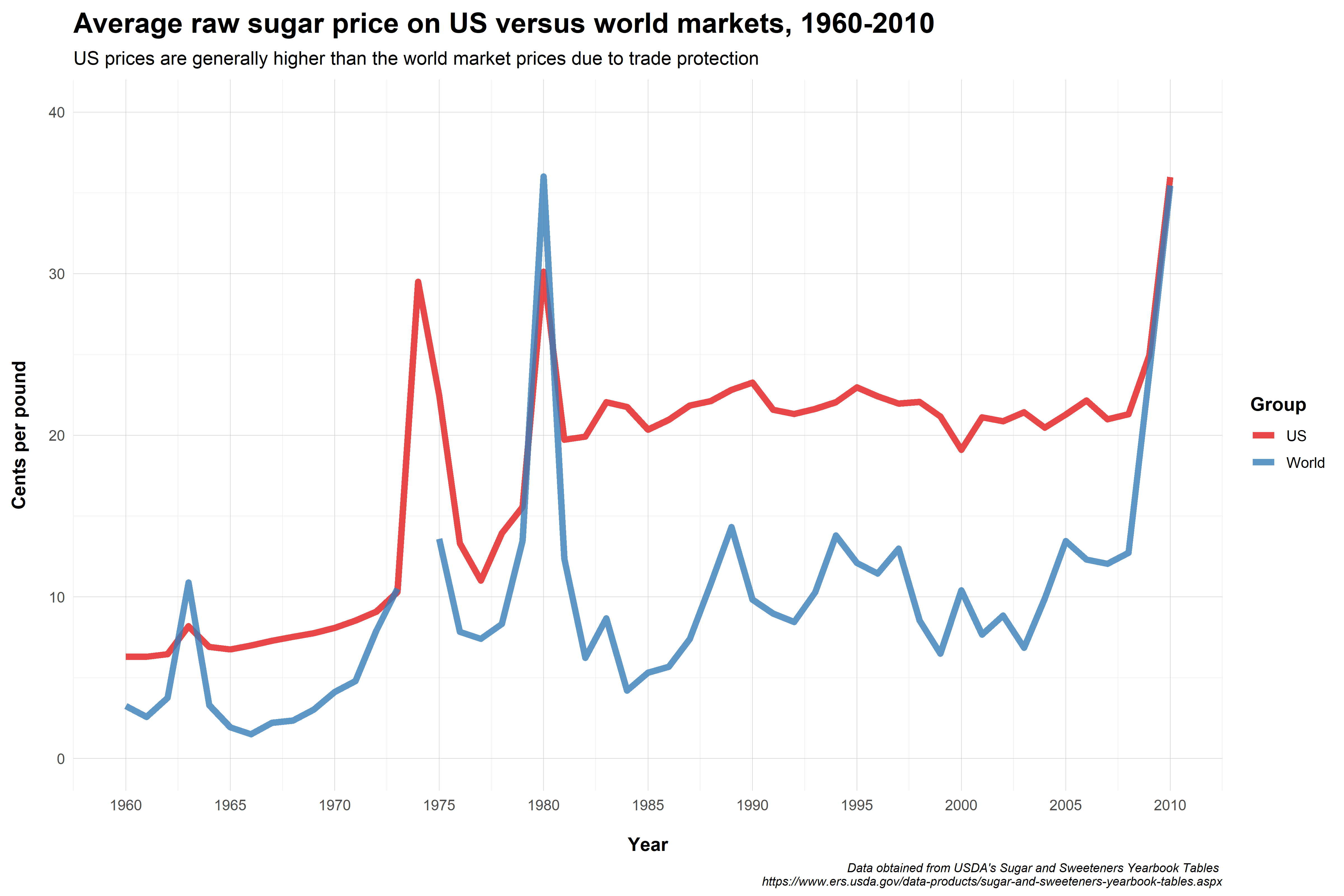
Trade as a Policy Instrument
Example: Sugar Quota System
WTO agreements requires the US to import a minimum of 1,117,195 metric tons of raw sugar from global producers
This is an aggregate figure-it does not have to be distributed evenly across sugar producing states
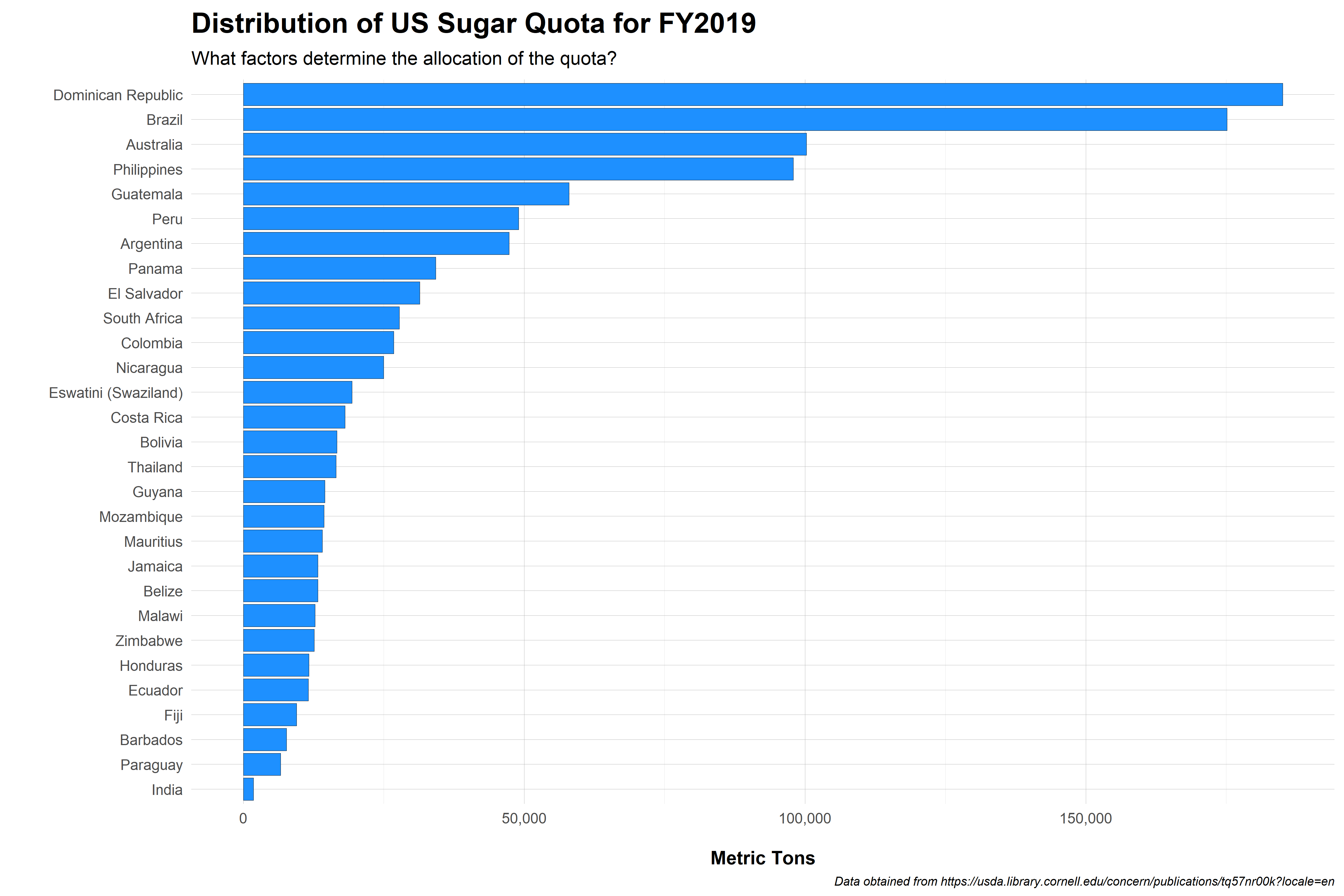
Trade as a Policy Instrument
What is the benefit to foreign countries?
Trade as a Policy Instrument
What is the benefit to foreign countries?
- Dominican Republic share = 185,050 metric tons
Trade as a Policy Instrument
What is the benefit to foreign countries?
Dominican Republic share = 185,050 metric tons
World raw sugar price (2019) ≈ 12.36 cents/lb.
Trade as a Policy Instrument
What is the benefit to foreign countries?
Dominican Republic share = 185,050 metric tons
World raw sugar price (2019) ≈ 12.36 cents/lb.
US raw sugar price (2019) ≈ 26.16 cents/lb.
Trade as a Policy Instrument
What is the benefit to foreign countries?
Dominican Republic share = 185,050 metric tons
World raw sugar price (2019) ≈ 12.36 cents/lb.
US raw sugar price (2019) ≈ 26.16 cents/lb.
Difference = 13.8 cents/lb.
Trade as a Policy Instrument
What is the benefit to foreign countries?
Dominican Republic share = 185,050 metric tons
World raw sugar price (2019) ≈ 12.36 cents/lb.
US raw sugar price (2019) ≈ 26.16 cents/lb.
Difference = 13.8 cents/lb.
So what?
Trade as a Policy Instrument
What is the benefit to foreign countries?
Dominican Republic share = 185,050 metric tons
World raw sugar price (2019) ≈ 12.36 cents/lb.
US raw sugar price (2019) ≈ 26.16 cents/lb.
Difference = 13.8 cents/lb.
So what?
That's about $56.3 million more than world market!
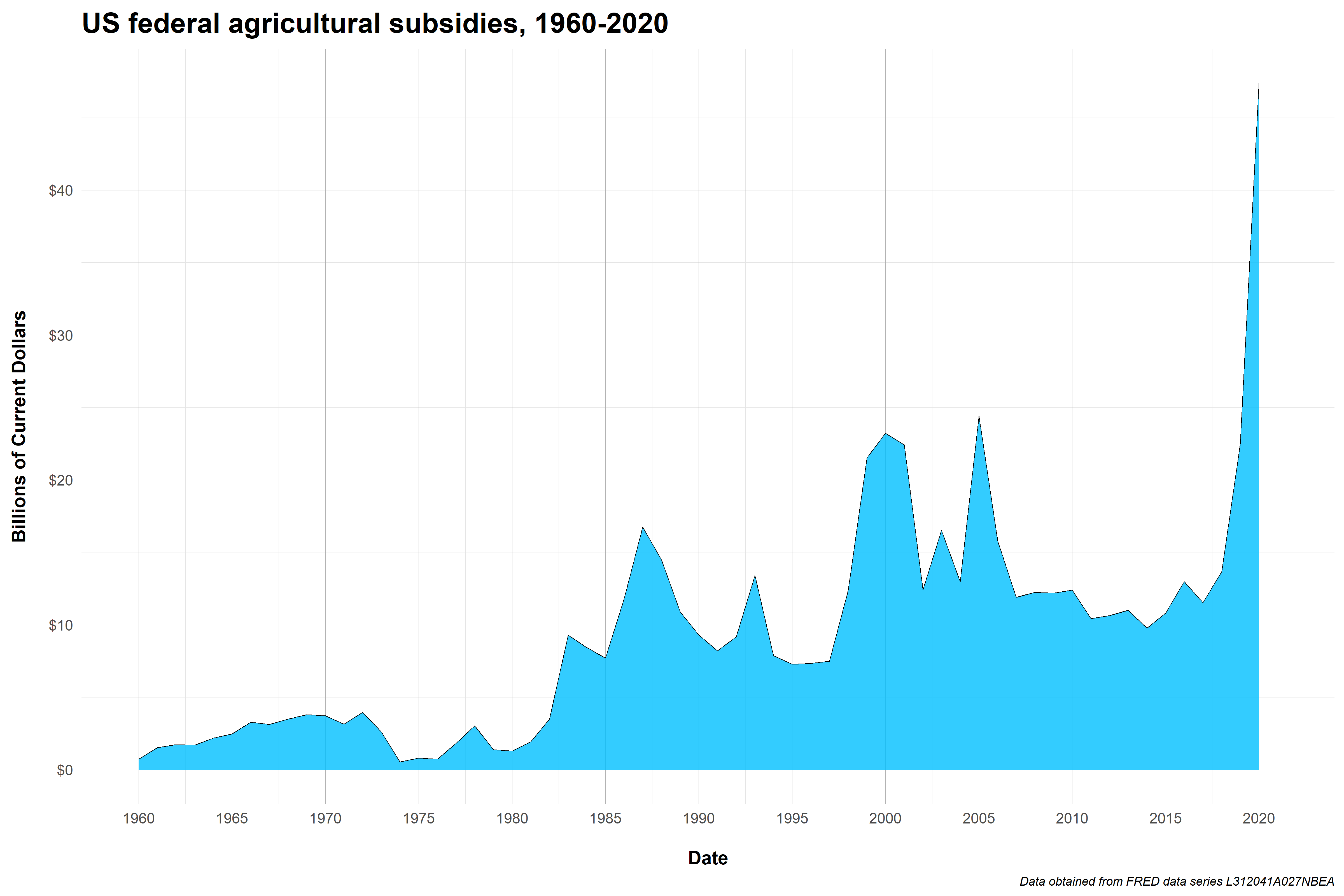
Trade as a Policy Instrument
More recent example: Manufacturing
Some industries are politically powerful for reasons apart from economic salience
Manufacturing sector has a lot of influence
Heavily tied into American image of production and the importance of making things
Early Trump economic policies focused on "reviving" US manufacturing, but was it even in need of resuscitation?
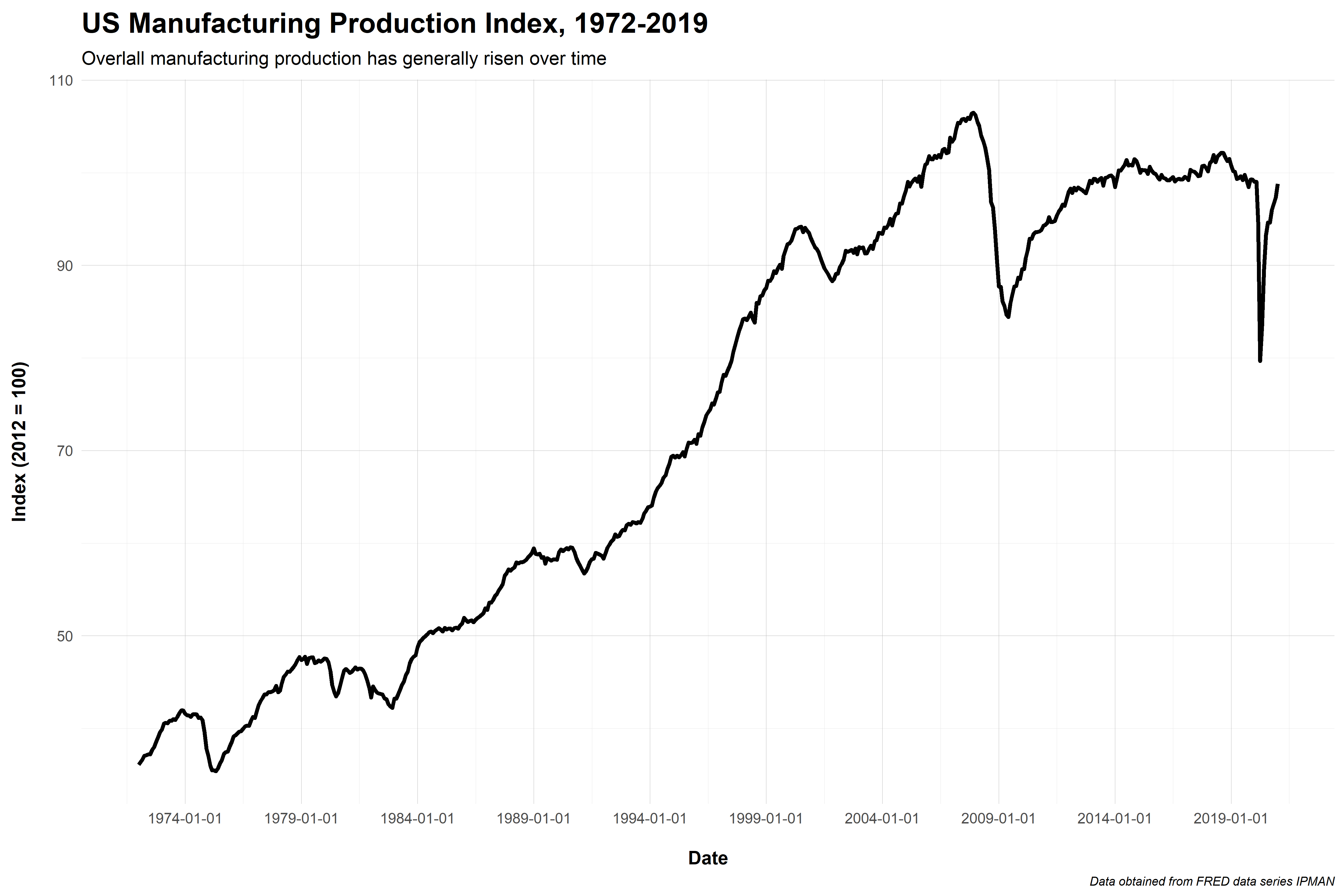
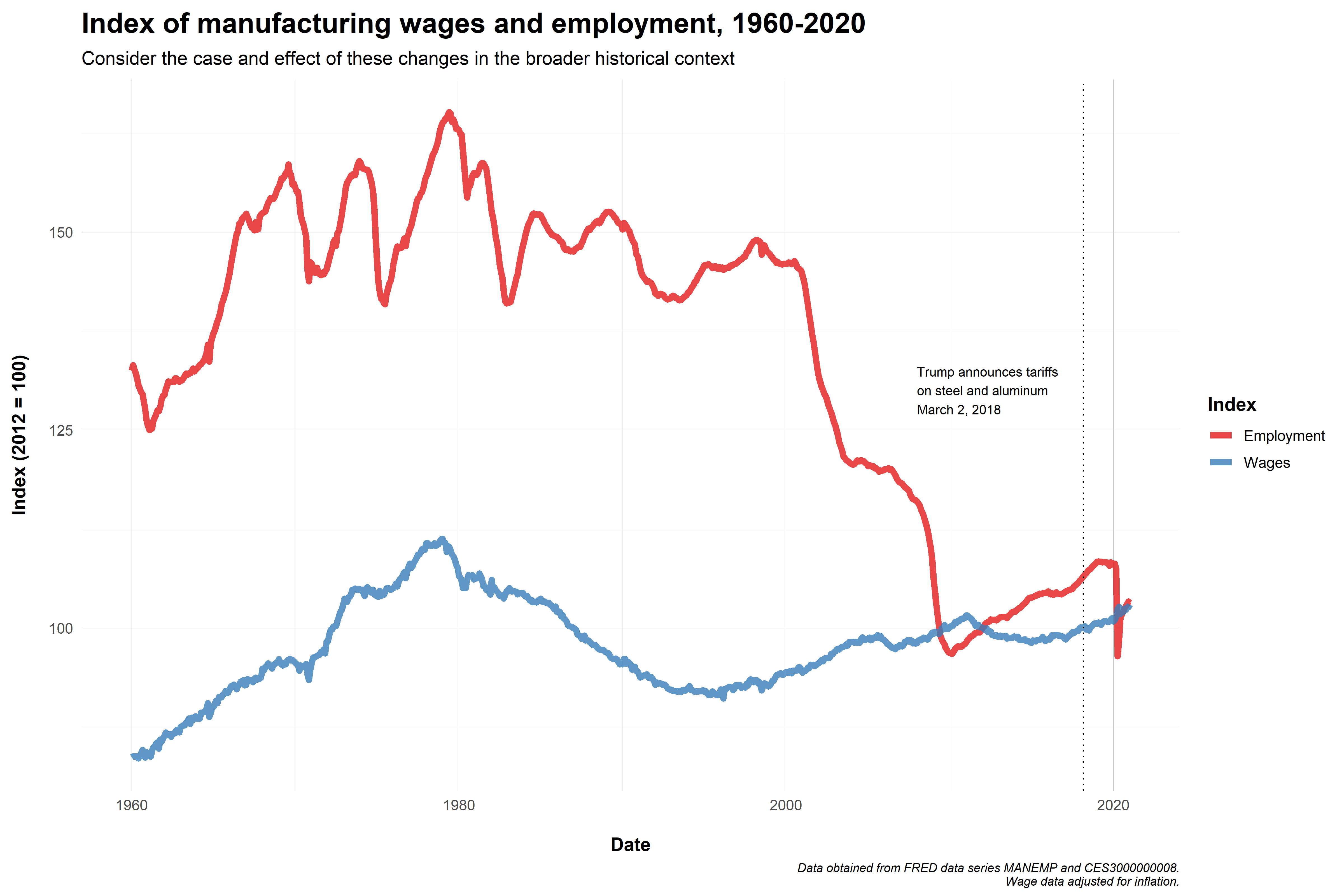
Notes
There's really no evidence that Trump's tariffs altered the employment or wage levels/growth that we see here.
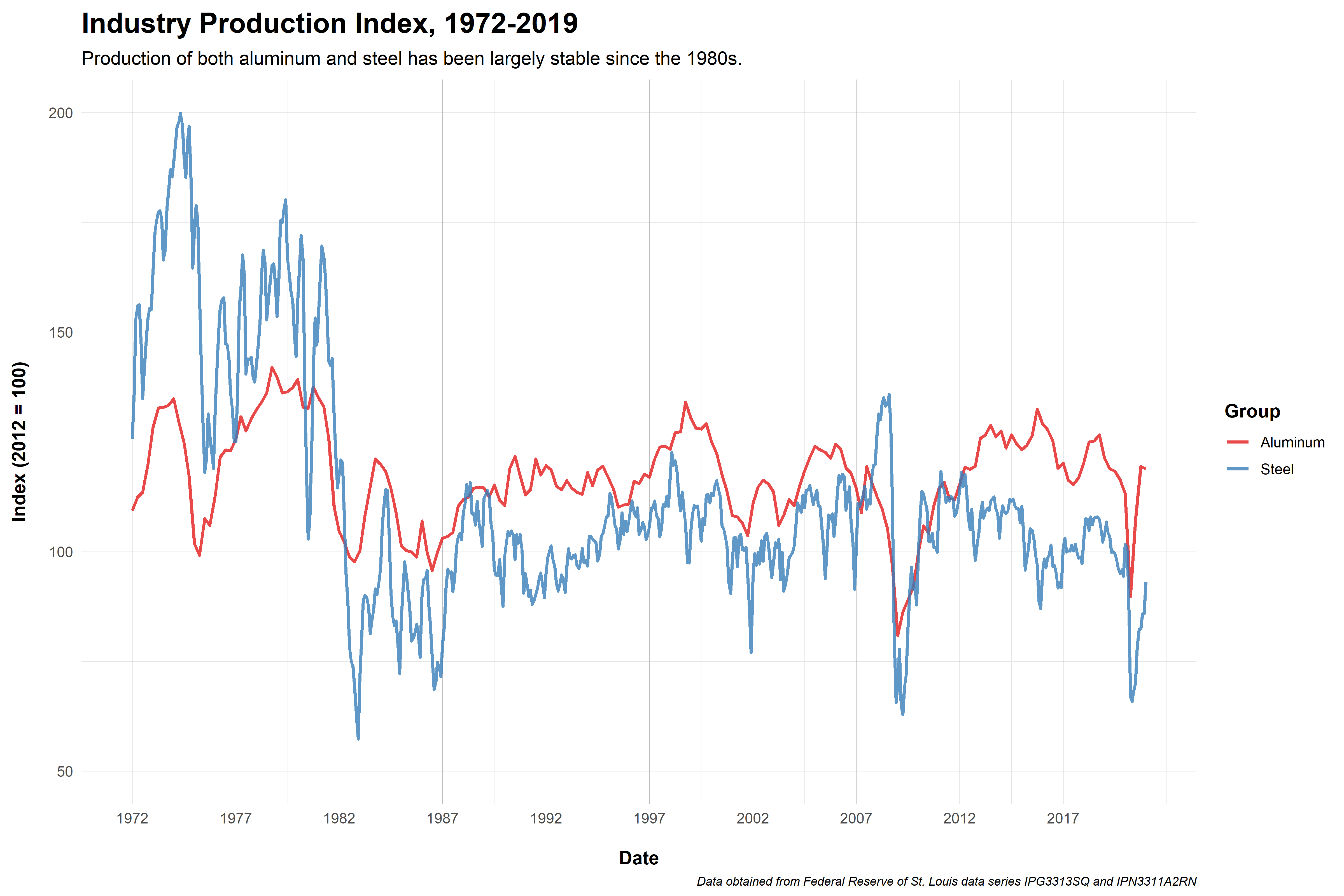
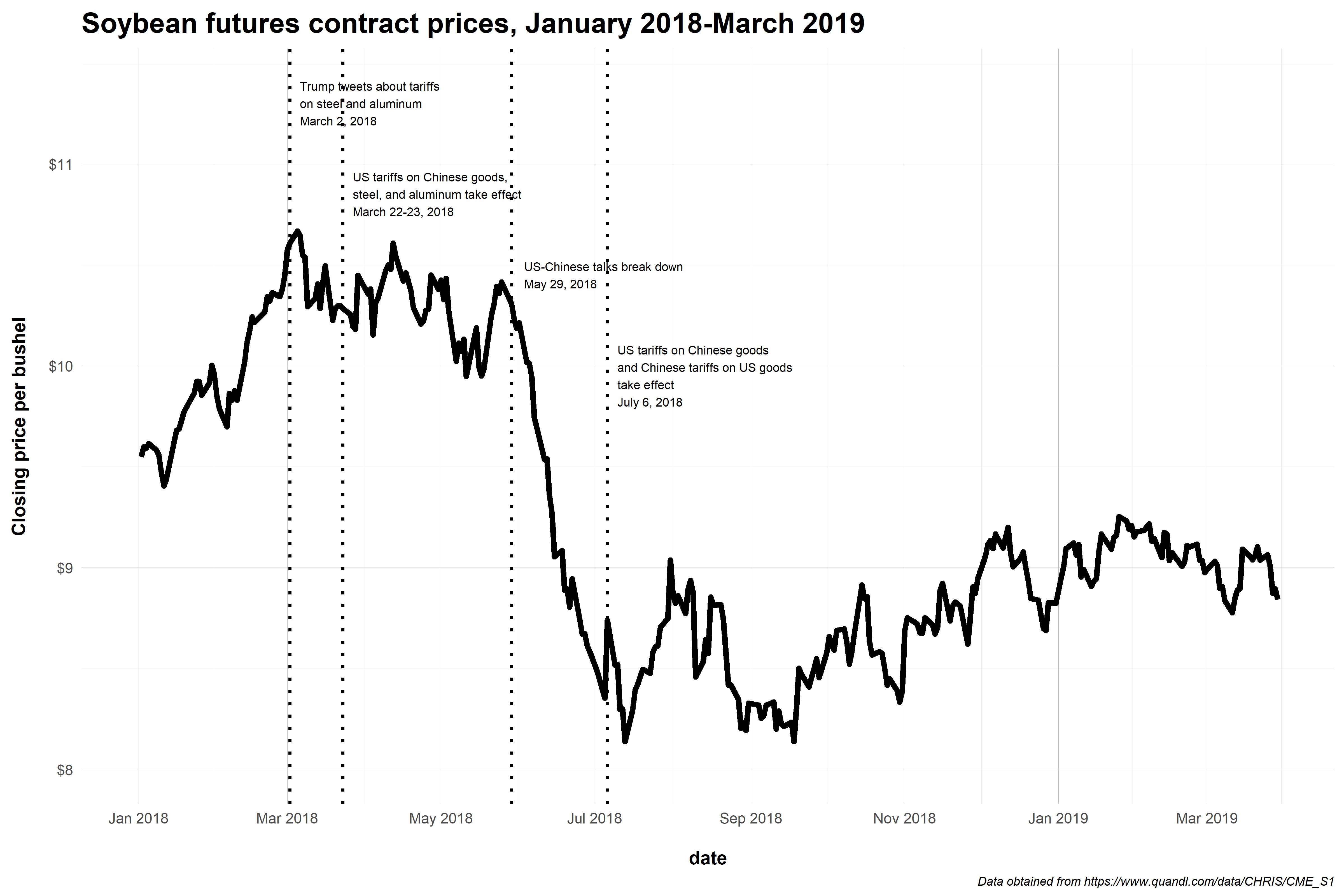
Monetary Policy
Monetary Policy
People need money to buy things
Theoretically, we could use all sorts of stuff!
A commonly held/used/accepted currency (e.g. "brand") of money helps resolve coordination problems
US dollar is widely used and valued, making it a great basis for global commercial exchange
Monetary Policy
So what are we talking about here?
For present purposes, let's focus on two key issue areas
Money supply
Exchange rates
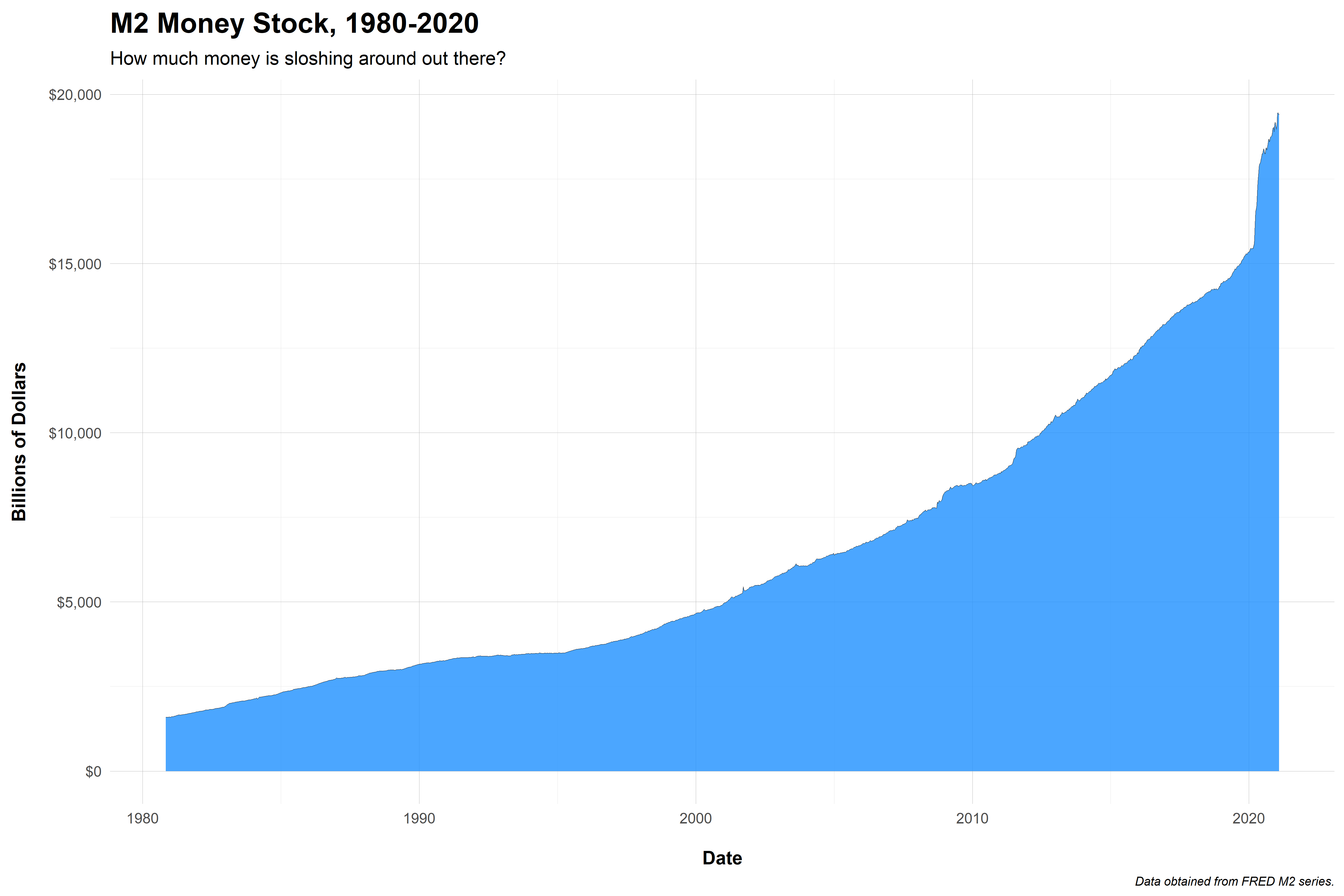
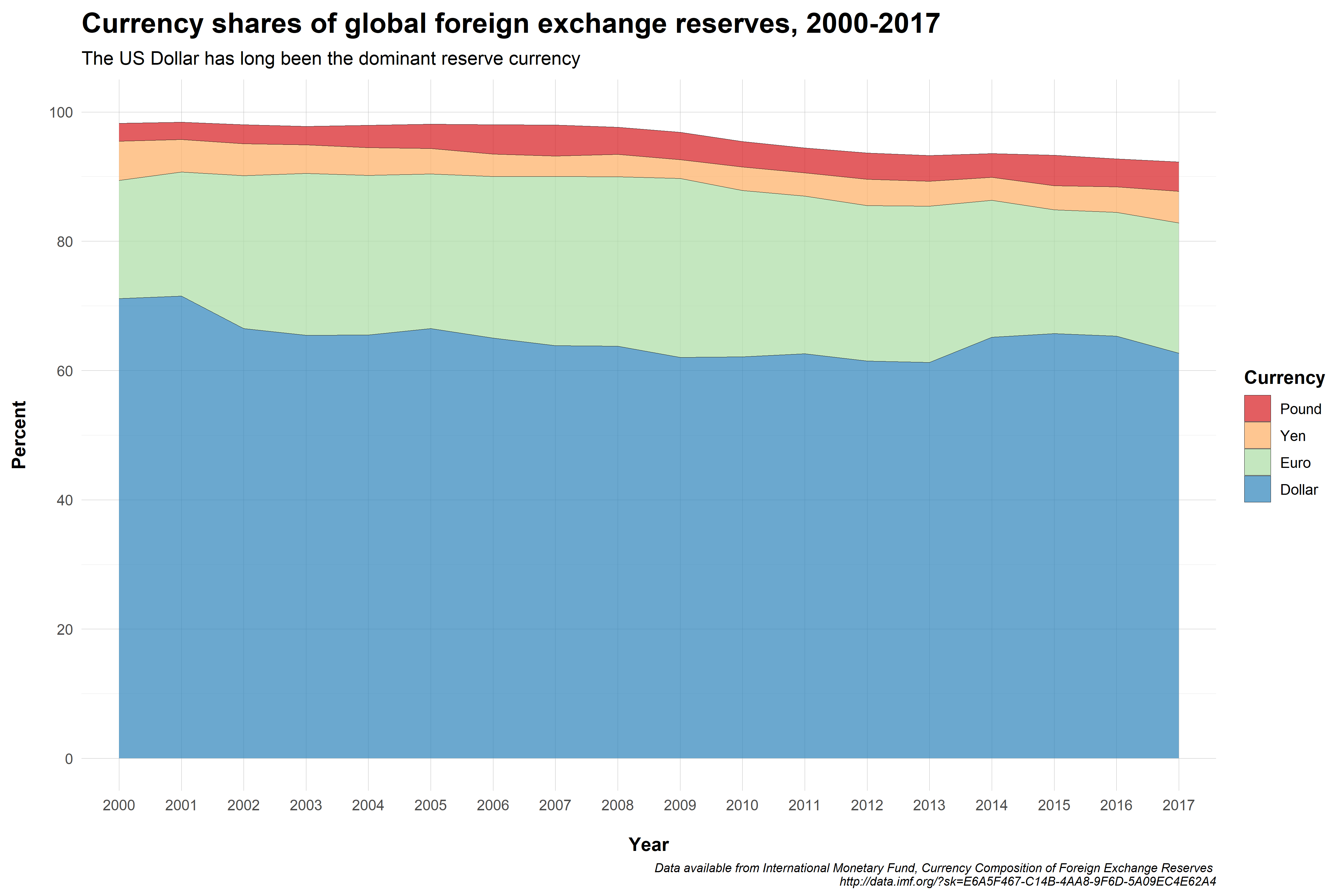
Monetary Policy
Mr. (money) manager
Governments manipulate money and its value through a couple of key mechanisms
Setting interest rates
Buying and selling assets
Monetary Policy
Mr. (money) manager
Governments manipulate money and its value through a couple of key mechanisms
Setting interest rates
Buying and selling assets
People use the dollar, so what?
Well, when you print your own currency and that currency is used as a global reserve currency, you've got options!
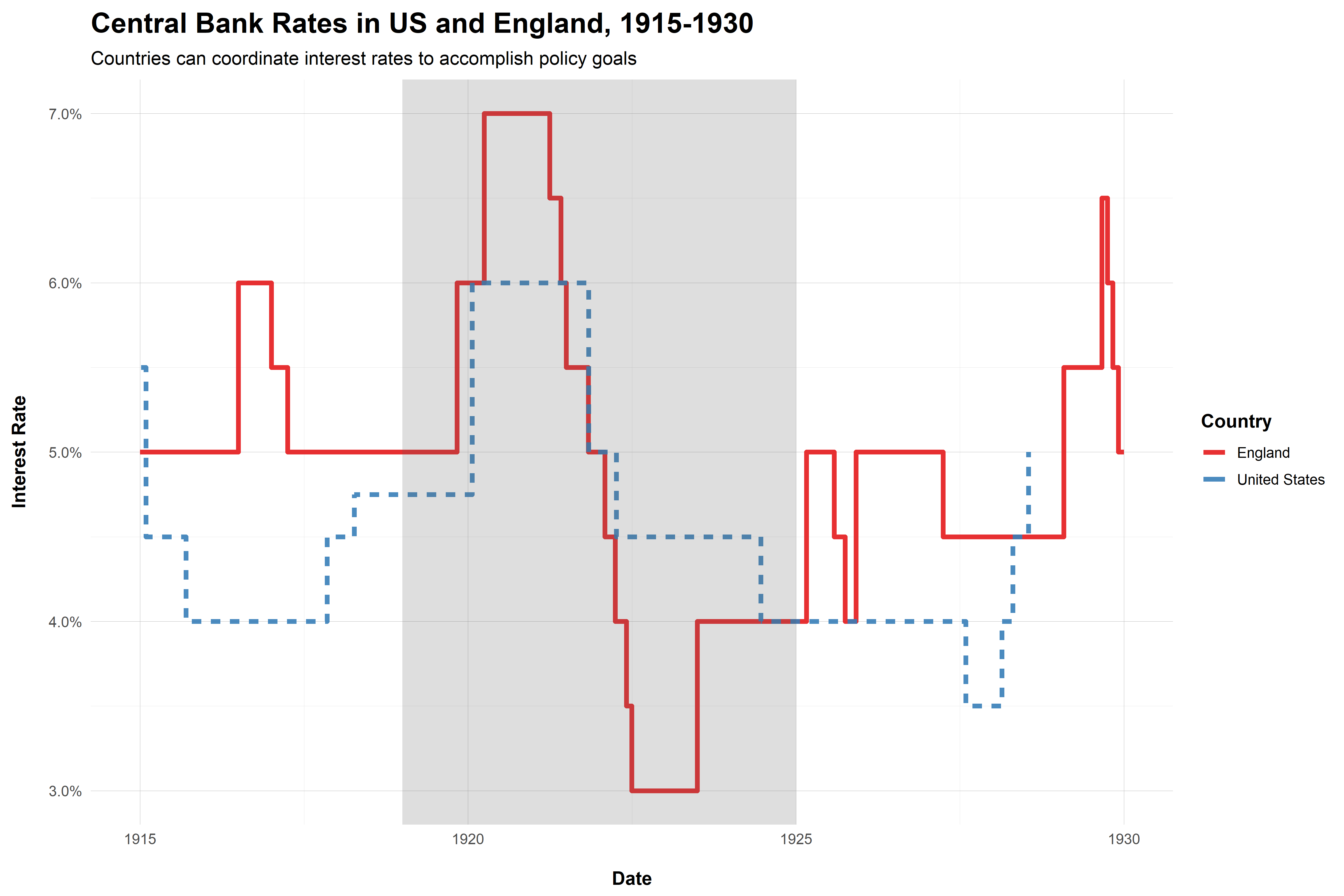
Immigration Policy
Immigration Policy
A Brief Overview of US Immigration Policy
- Immigration was largely unregulated until the late 1800s
- US government starts keeping track more systematically in 1819 with the Steerage Act
- Immigration Act of 1864 creates positions within the State Department to oversee immigration, but Act is repealed after 4 years.
- Chinese Exclusion Act of 1882
- Immigration Act of 1882
- Immigration Act of 1891
Immigration Policy
Early Quote System
Immigration policy takes a turn in the 20th Century
- Quota Law of 1921
- National Origins Act of 1924
Immigration Policy
Cold War Period
- Labor shortages during WWII lead to growth in immigration from Mexico
- US eliminates formal race-based quotas on immigration, but de facto policy still prioritizes Western Europe
- Country-specific quotas are gradually eliminated, but broad regional quotas remain
- US policy eventually starts to emphasize humanitarian concerns, partly to stick it to the Soviets
What Drives Immigration?
What Drives Immigration?
Lots of things, but for now we'll focus on a basic IPE approach to political economy
Push Factors
- Lack of economic opportunity (i.e. jobs)
- War and conflict
- Repression and violence
- Crime
Pull Factors
- Basically the same, but the inverse
- Attracted to job opportunities
- Less crime/violence
- More political participation
What Drives Immigration?
Heckscher--Ohlin Framework
- Think of migration in terms of trade theory
- Countries export goods that make intensive use of the factors that are abundant
- Countries import goods that make intensive use of the factors that are scarce
Migration as factor mobility
- Just as investors move capital around seeking a greater return on investment, so too do individuals move trying to find greater returns on their investment (i.e. time, effort, skills, etc.)